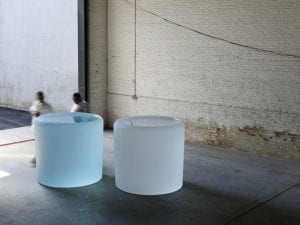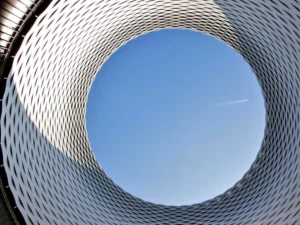Where and when does home exist? What defines our sense of place? How do we relate to our everyday environments? World-leading artist Do Ho Suh (b. 1962) confronts these questions through drawing, film, sculpture and more. This season, National Galleries of Scotland (Modern One) presents the largest European exhibition of the multidisciplinary practitioner to date with Do Ho Suh: Tracing Time. The show draws attention to the ways that sketching on paper has been integral to the artist’s 25-year career, especially when it comes to it comes to exploring the idea of space. For Suh, the blank page acts as a springboard that propels ideas into reality. Over 100 works are on display, including his never-before-seen sketchbooks. Paper is a “foundational element” of Suh’s practice because “it has sculptural, architectural and bodily qualities. It works in part because of its mercurial capacities – the ways in which it can absorb, and integrate with other materials, rather than merely providing a surface for them to sit on.”
Questions of how we relate to space are at the core of Suh’s expansive practice. Visitors will find this throughout the gallery in a selection of animations, architectural rubbings, drawings, paper sculptures, prints and paintings. One highlight is a watercolour and pencil image titled A Perfect Home (1999). It shows a small red house, flanked by a tree and a flower, standing on a bridge with “Korea” and “USA” written on either side. Suh was born in Korea and now splits his time between New York, London and Seoul. This small study imagines a place connecting two countries over 10,736 kilometres apart. This sketch was the starting point for The Bridge Project, an ongoing series in which the artist and a team of architects, designers and researchers generate fantastical links between the three places he calls home – connecting nations across temporal, spatial, psychological and cultural boundaries. It’s a powerful concept.

Moreover, Suh expands the definition of “drawing” to encompass embroidery, sewing vibrantly-hued string into handmade cotton paper. This process creates strokes that appear so delicate they look as though they have been formed with the sharpest coloured pencil or the finest brush. These images go beyond the two-dimensional as wisps of colour extend from the page. His mesmerising piece Staircase/s (2019) is a prime example, showing the zig-zagging path in the colours of the rainbow. From the left, we see the communal flight of Suh’s New York apartment captured with the crisp detail of an architectural diagram. Lines spread in wispy tendrils from each step towards the right of the frame. Here, two key elements of Suh’s practice meet: architecture and fabric. It’s an ideal precursor to his larger-scale works, which can fill whole rooms.
Suh’s most renowned installations re-create transitional spaces – such as life-sized corridors and doorways – in sheer, colourful fabric. Here, the translucency of the material reflects the haziness and subjectivity of memory. Another significant element of Suh’s work is that these enormous structures can be packed away and transported. This is why he often refers to them as “suitcase homes” that can be carried anywhere. In an interview with Dr Francesca Romana Forlini from KoozArch, Suh elaborates on his attention to scale and subjectivity. He states: “I’m not actually interested in monumentality for monumentality’s sake. I’ve never strived for spectacle.” He selects the 1:1 ratio mainly because “the body is essential. Most of my work is activated by the visitors’ presence within it, their movement through the piece.”

Suh’s engaging and imaginative artworks ask questions about home and identity. They welcome viewers inside, encouraging us to reflect on our own experiences of place: individually and collectively, from memories to our physical presence in the here-and-now. National Galleries of Scotland’s Tracing Time gathers fragments from a remarkable oeuvre, showing how sketching can envision relationships between architecture and the body, as well as help us make sense of where we have been, and where we go next.
National Galleries of Scotland, Do Ho Suh: Tracing Time | Until 1 September
Words: Diana Bestwish Tetteh
Image Credits:
- Do Ho Suh, Installation view, Hubs, 2016 © Do Ho Suh Photo by Neil Hanna
- Do Ho Suh, Corridor – 4, Wielandstr. 18, 12159 Berlin, Germany, 2015. Polyester fabric and stainless steel (detail) 347 x 225 x 191 c m Courtesy of the artist, Lehmann Maupin New York, Seoul, and London , and Victoria Miro Gallery London, and Venice Photography by Jeon Taeg Su © Do Ho Suh
- Do Ho Suh, Hub, 3rd Floor, Union Wharf, 23 Wenlock Road, London N1 7ST, UK, 2016 Polyester fabric and stainless steel 259.2 x 464.1 x 202.5 cm Courtesy of the artist, Lehmann Maupin, New York , Seoul and Londo n , and Victoria Miro Gallery London, and Venice Photography by Jeon Taeg Su © Do Ho Suh





